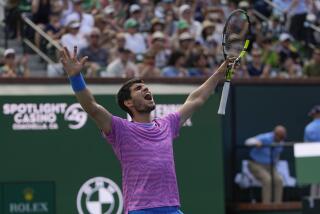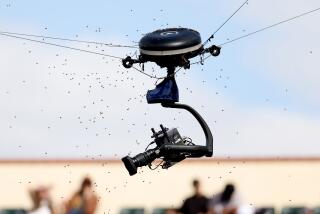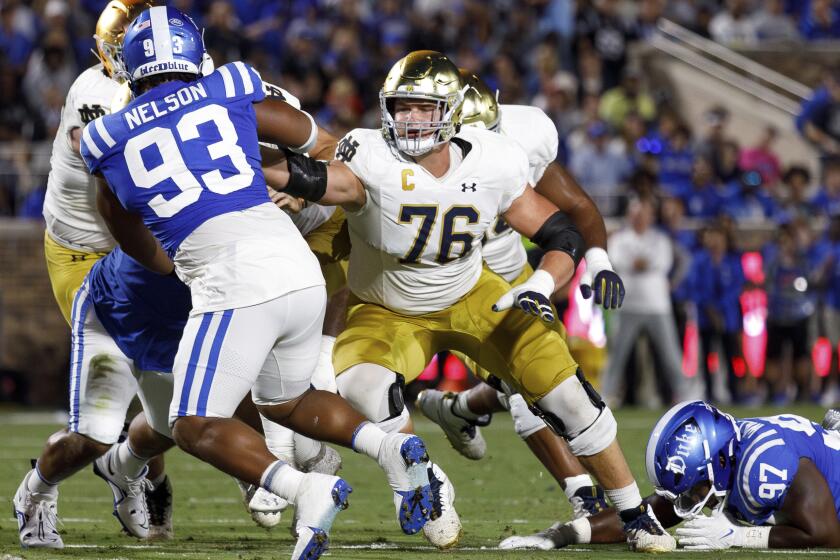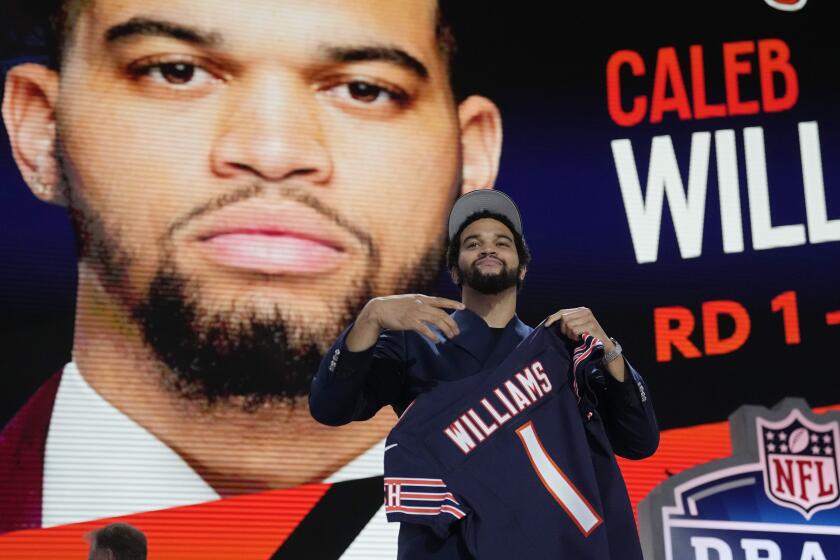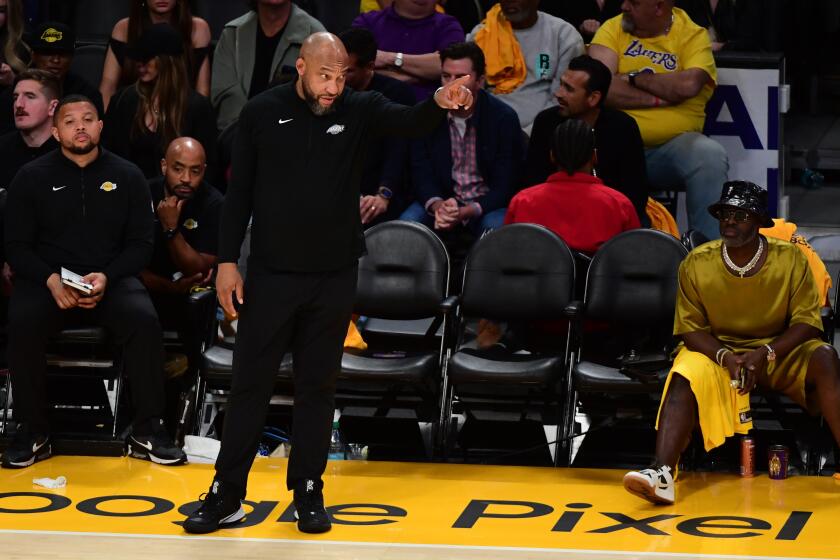U.S. Open champ Marin Cilic is ready to lower the boom at Indian Wells
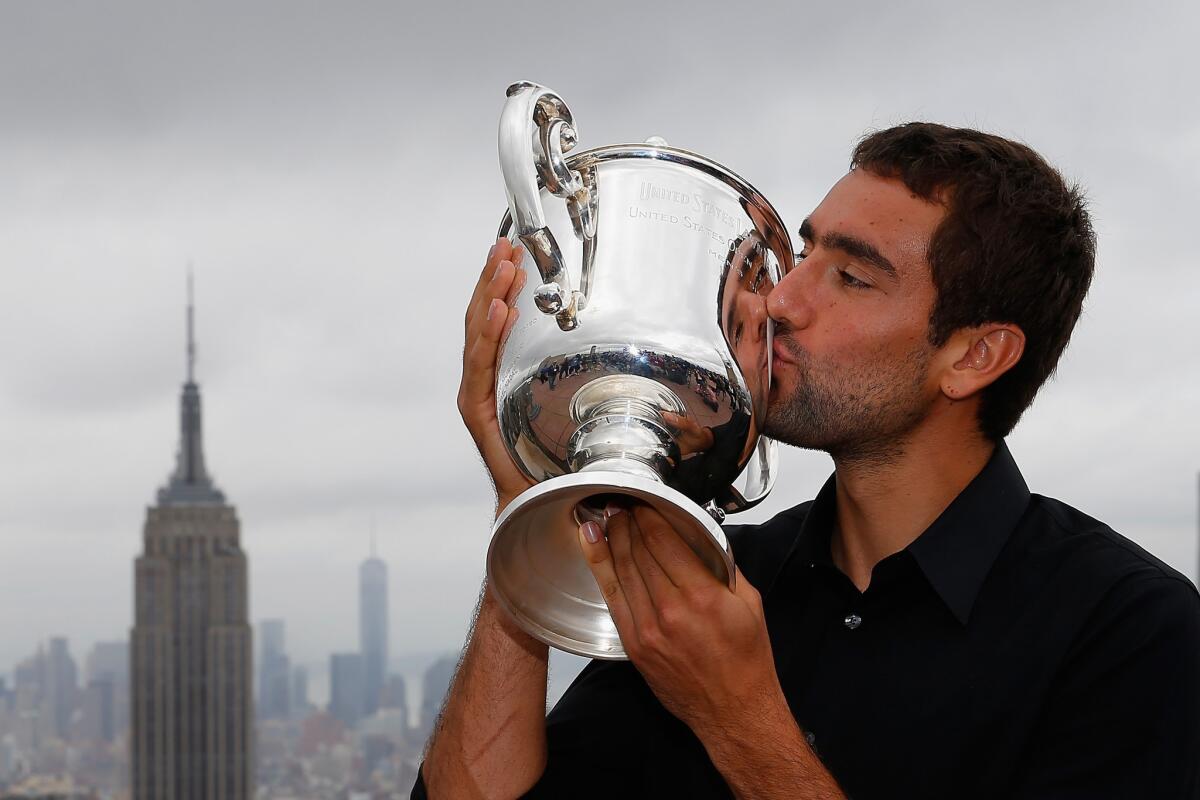
Last year’s U.S. Open men’s tennis title was won by a tall, lanky Croatian with a heavy beard and friendly, slightly goofy smile.
This Croat star could make a tennis ball crack a windshield. When he met the media, he smiled a lot, pretended to hate it and loved every minute of it.
And no, Goran Ivanisevic had not made a triumphant return to Flushing Meadows. His clone had.
Meet Marin Cilic, 26 years old, 6 feet 6, darkly handsome with a smile that lights up the room. Five minutes over a cup of coffee with him and you want to make a bet on Wimbledon or introduce him to your daughter.
When Cilic won last year’s U.S. Open, he was about as well known as In-N-Out Burger in Bangladesh. Now, well, it’s about the same.
Later this week, Cilic will play at the BNP Paribas Open in Indian Wells. He will be the No. 10-seeded player. Talk about fleeting fame.
He last played in November, at the ATP Tour Championships. Since then, he has been slowly rehabilitating a sore right shoulder, the trigger point for the type of serving bombardment that sent Kei Nishikori to a quick 6-3, 6-3, 6-3 departure in the U.S. Open’s made-for-TV Monday night final. Cilic hit Nishikori with 17 aces and the quick Japanese player got just enough racket on about a dozen more to prevent the serving statistic from being other-worldly.
Now, Cilic, who was bothered by an inflamed humerus bone, says he is ready to resume the bombardment.
“I’ve been around L.A. for awhile, just working and resting,” Cilic says, “and the shoulder feels great. Not a bit of pain.”
Going forward, his success, or lack of it, will be closely watched. Potential new stars, with staying power, are coveted by tennis.
When he won amid the noise, heat, cold, rain, dust, humidity and drunken stockbrokers known as the U.S. Open, it marked only the third time in the prior 38 Grand Slam men’s finals (back to Marat Safin in the 2005 Australian) that one of the sport’s Big Four hadn’t won. Those Big Four — Novak Djokovic, Andy Murray, Rafael Nadal and Roger Federer — previously had their dominance interrupted only by Juan Martin Del Potro in the 2009 U.S. Open and Stan Wawrinka in the 2014 Australian.
Cilic, while encouraged by winning in New York and optimistic about his progress, isn’t exactly throwing down gauntlets. Based on recent inactivity, that’s understandable.
“At Indian Wells,” he says, “I’ll need a couple of matches to kind of play my way back into things.”
He will need more than that to emerge from a shadow of which he has no desire to emerge. That would be the shadow of Ivanisevic, who is Cilic’s coach and inspiration.
“I have known him since I was 13 years old,” Cilic says. “When I was a junior player and he was a big star, he went out of his way to seek out two of us who were top juniors and took us out to hit with him. He said he wanted to see what we had.”
Ivanisevic won just one major title, the 2001 Wimbledon. But that victory caused a Richter-scale reaction in Croatia. An estimated 250,000 people greeted him when he returned from London and he responded by taking off his clothes and jumping into the sea.
“People in Croatia still know where there were,” Cilic says, “the moment Goran won at Wimbledon. There will never be a bigger moment in sports in our country.”
Not even Cilic’s U.S. Open?
Cilic shakes his head and says, “Goran is Goran.”
Ivanisevic will be with Cilic at Indian Wells. It could be a homecoming of sorts.
It was at Indian Wells, years ago, that Ivanisevic responded to reporters’ questions about why he struggled so much in the desert. He told them that, when he went out to dinner at night, all he saw were old people, whom he feared would die face down in their dinner plates. The next day, a gathering of Palm Springs area senior citizens showed up for the tennis matches wearing T-shirts that said: “We Made It.”
It was also at Indian Wells that Ivanisevic regaled reporters with an instructional news conference about the proper way to smash a tennis racket. Another player had slammed his racket to the ground in anger that day, and Ivanisevic’s critique was critical.
“You cannot be wimpy,” he cautioned. “You have to follow through.”
Cilic says a major victory does wonders for one’s game.
“You win a Grand Slam,” he says, sounding eerily like Ivanisevic, “and now the ball is listening to you. Now, you want it to go into the court, it goes into the court.”
He also credits Ivanisevic with much of the progress in his game. He says his coach calms him down and keeps him loose.
(Now there’s a surprise).
He says that, from Ivanisevic comes, more than strategy, common sense and street smarts.
“Before I played Nishikori,” Cilic says, “Goran made sure I understood that, as nervous as I was, so was Nishikori. You are both first-timers in a Grand Slam final, he told me. It really helped.”
The people who run the Indian Wells tournament have thousands of match-court seats to sell. But among the enhancements they made for this year were additional seats at the practice courts.
Did they actually anticipate that some of the best action, and entertainment, could take place there, when reigning U.S. Open champion Marin Cilic goes out to hit with his coach.
Will Goran smash a racket? Will area steak houses offer discounts for senior survivors? Will little old ladies show up at the matches in T-shirts?
Who said tennis is boring?
Twitter: @Dwyrelatimes
More to Read
Get our high school sports newsletter
Prep Rally is devoted to the SoCal high school sports experience, bringing you scores, stories and a behind-the-scenes look at what makes prep sports so popular.
You may occasionally receive promotional content from the Los Angeles Times.
